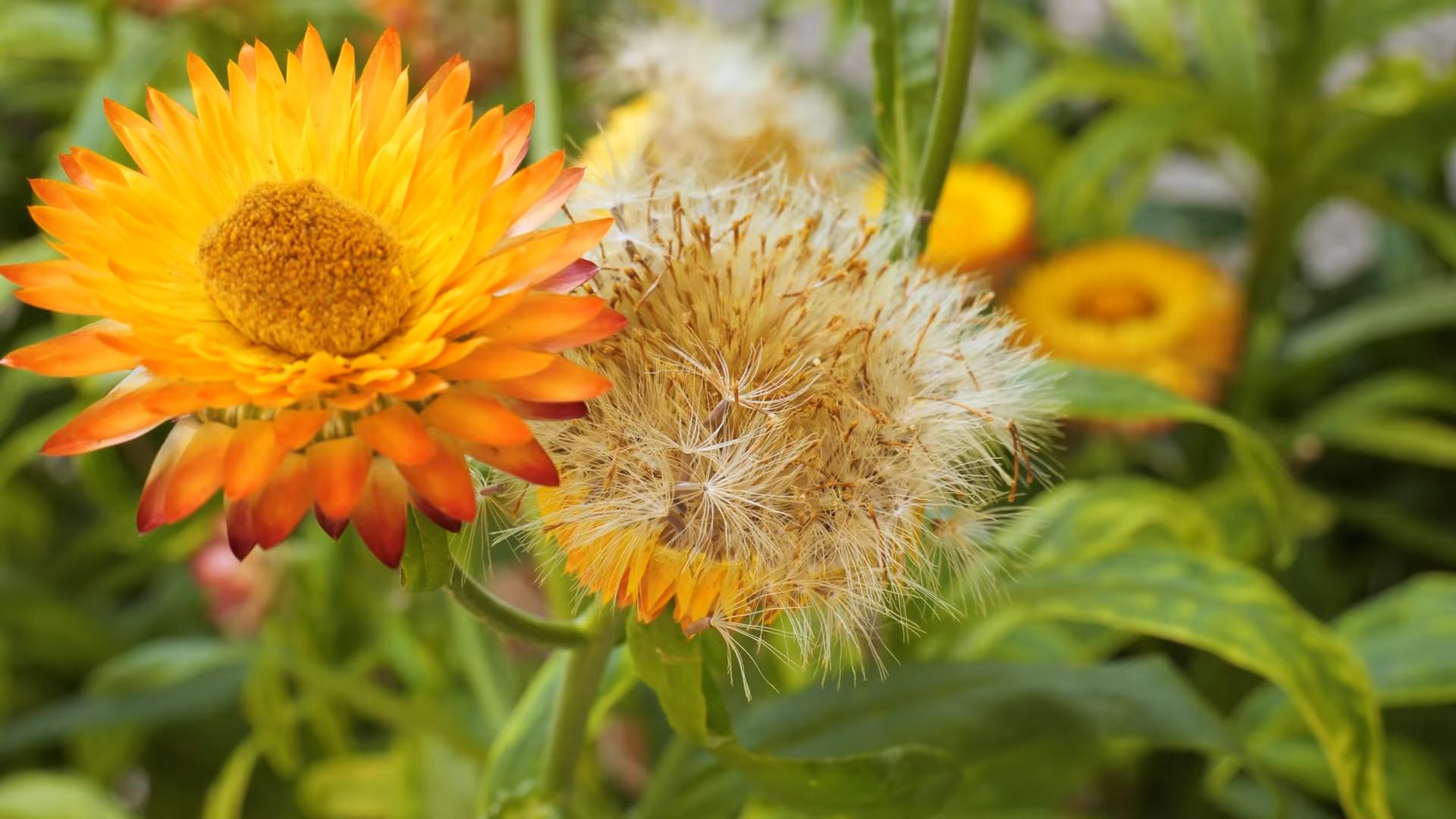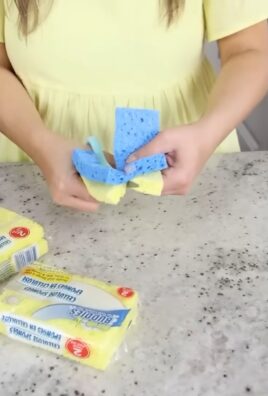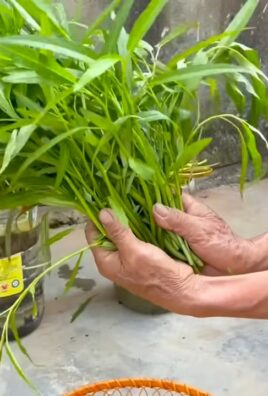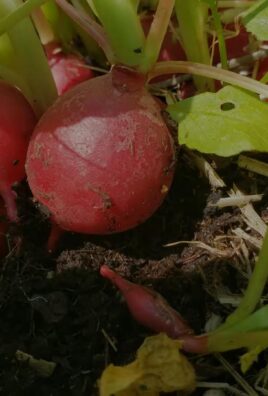Grow Strawflowers from Seed and unlock a world of everlasting beauty right in your own backyard! Have you ever dreamed of having a garden bursting with vibrant, papery blooms that you can enjoy fresh and dried? Well, dream no more! This DIY guide will walk you through every step of cultivating these charming flowers from tiny seeds to stunning, long-lasting displays.
Strawflowers, also known as *Xerochrysum bracteatum*, have a fascinating history. Originating in Australia, they were quickly embraced by gardeners worldwide for their unique texture and ability to retain their color and shape when dried. For centuries, they’ve been a staple in dried flower arrangements, adding a touch of rustic elegance to homes and celebrations.
But why should you learn to grow strawflowers from seed? In today’s world, where sustainability and self-sufficiency are increasingly important, growing your own flowers is a rewarding and eco-friendly way to beautify your space. Plus, imagine the satisfaction of creating stunning bouquets and crafts with flowers you nurtured from the very beginning! Not only will you save money on store-bought dried flowers, but you’ll also have a constant supply of these cheerful blooms to brighten your home and share with friends. Let’s get started and turn your garden into a strawflower paradise!

Grow Your Own Everlasting Bouquet: A DIY Guide to Strawflowers from Seed
Hey there, fellow flower enthusiasts! I’m so excited to share my experience growing strawflowers from seed. These beauties, also known as everlasting flowers, are incredibly rewarding to cultivate. Not only do they add a vibrant splash of color to your garden, but they also dry beautifully, allowing you to create stunning everlasting bouquets that last for years. Trust me, once you start growing these, you’ll be hooked!
Why Grow Strawflowers?
Before we dive into the nitty-gritty, let’s talk about why strawflowers are so awesome:
* Long-lasting blooms: As the name suggests, strawflowers retain their color and shape even after drying.
* Variety of colors: You can find strawflowers in a rainbow of hues, from vibrant reds and oranges to soft pinks and yellows.
* Easy to grow: They’re relatively low-maintenance and can thrive in various conditions.
* Great for crafting: Dried strawflowers are perfect for wreaths, potpourri, and other DIY projects.
* Attract pollinators: Bees and butterflies love strawflowers, making them a valuable addition to any pollinator garden.
Getting Started: What You’ll Need
To embark on your strawflower-growing adventure, gather these essential supplies:
* Strawflower seeds: Choose a variety of colors and types to create a diverse bouquet. I usually get mine from a reputable seed supplier to ensure good germination rates.
* Seed starting trays or pots: These will provide a controlled environment for your seedlings.
* Seed starting mix: This lightweight, sterile mix is ideal for delicate seedlings. Avoid using garden soil, as it can harbor diseases.
* Spray bottle: For gently watering your seedlings.
* Grow lights (optional): If you’re starting seeds indoors, grow lights will provide the necessary light for healthy growth.
* Plant labels: To keep track of your different varieties.
* Gardening gloves: To protect your hands.
* Trowel or small shovel: For transplanting seedlings.
* Well-draining garden soil: Strawflowers prefer soil that doesn’t stay soggy.
* Fertilizer (optional): A balanced fertilizer can help boost growth.
* Scissors or pruning shears: For harvesting the flowers.
* Twine or rubber bands: For bundling the flowers for drying.
Phase 1: Starting Seeds Indoors (Recommended)
Starting strawflower seeds indoors gives them a head start, especially if you live in a region with a shorter growing season. I highly recommend this method for the best results.
1. Prepare your seed starting trays or pots: Fill each cell or pot with seed starting mix, leaving about half an inch of space at the top. Gently tap the trays to settle the mix.
2. Sow the seeds: Sprinkle a few seeds (2-3) on top of the soil in each cell or pot. Strawflower seeds are quite small, so be careful not to overcrowd them.
3. Cover the seeds lightly: Gently press the seeds into the soil and cover them with a very thin layer of seed starting mix. They need light to germinate, so don’t bury them too deep.
4. Water gently: Use a spray bottle to mist the soil thoroughly. Avoid overwatering, as this can lead to damping off, a fungal disease that can kill seedlings.
5. Provide warmth and light: Place the trays or pots in a warm location, ideally between 70-75°F (21-24°C). If you’re using grow lights, position them a few inches above the soil surface and keep them on for 14-16 hours per day.
6. Maintain moisture: Keep the soil consistently moist but not soggy. Check the moisture level daily and mist as needed.
7. Wait for germination: Strawflower seeds typically germinate within 7-14 days. Be patient, and don’t give up if you don’t see sprouts right away.
8. Thin the seedlings: Once the seedlings have developed their first true leaves (the second set of leaves), thin them to one strong seedling per cell or pot. Use small scissors to snip off the weaker seedlings at the soil line.
9. Harden off the seedlings: Before transplanting your seedlings outdoors, you need to acclimate them to the outdoor environment. This process, called hardening off, gradually exposes the seedlings to sunlight, wind, and temperature fluctuations. Start by placing the trays or pots outdoors in a sheltered location for an hour or two each day, gradually increasing the time over the course of a week.
Phase 2: Direct Sowing (Alternative)
If you live in a region with a long growing season, you can also direct sow strawflower seeds directly into your garden. However, keep in mind that this method may result in a later bloom time.
1. Prepare the soil: Choose a sunny location with well-draining soil. Amend the soil with compost or other organic matter to improve its fertility and drainage.
2. Sow the seeds: After the last frost, sow the seeds directly into the garden, spacing them about 12 inches apart.
3. Cover the seeds lightly: Gently press the seeds into the soil and cover them with a very thin layer of soil.
4. Water gently: Use a watering can or hose with a gentle spray nozzle to water the soil thoroughly.
5. Keep the soil moist: Keep the soil consistently moist until the seedlings emerge.
6. Thin the seedlings: Once the seedlings have developed their first true leaves, thin them to one strong seedling per 12 inches.
Phase 3: Transplanting Seedlings Outdoors
Once your seedlings have been hardened off and the danger of frost has passed, it’s time to transplant them into your garden.
1. Choose a sunny location: Strawflowers thrive in full sun, so select a spot that receives at least 6-8 hours of sunlight per day.
2. Prepare the planting holes: Dig holes that are slightly larger than the root balls of your seedlings, spacing them about 12 inches apart.
3. Remove the seedlings from their containers: Gently squeeze the sides of the seed starting trays or pots to loosen the seedlings. Carefully lift the seedlings out, being careful not to damage the roots.
4. Plant the seedlings: Place each seedling into a planting hole and backfill with soil. Gently firm the soil around the base of the plant.
5. Water thoroughly: Water the newly transplanted seedlings thoroughly to help them settle in.
6. Mulch (optional): Apply a layer of mulch around the plants to help retain moisture and suppress weeds.
Phase 4: Caring for Your Strawflowers
Once your strawflowers are established, they’re relatively low-maintenance. Here are a few tips to keep them thriving:
* Watering: Water regularly, especially during dry spells. Avoid overwatering, as this can lead to root rot.
* Fertilizing (optional): If you want to boost growth, you can fertilize your strawflowers with a balanced fertilizer every few weeks.
* Deadheading: Remove spent flowers to encourage more blooms.
* Pest control: Strawflowers are generally pest-resistant, but keep an eye out for aphids and other common garden pests. If you notice any pests, treat them with an appropriate insecticide or organic pest control method.
* Support (optional): Taller varieties may need staking to prevent them from flopping over.
Phase 5: Harvesting and Drying Strawflowers
The best time to harvest strawflowers for drying is when the outer petals have opened but the inner petals are still closed. This will ensure that the flowers retain their shape and color during the drying process.
1. Harvest the flowers: Use sharp scissors or pruning shears to cut the stems of the flowers, leaving about 6-8 inches of stem.
2. Remove the leaves: Strip off any leaves from the stems, as they can rot during the drying process.
3. Bundle the flowers: Gather the flowers into small bundles of 5-10 stems and secure them with twine or rubber bands.
4. Hang the flowers upside down: Hang the bundles upside down in a cool, dark, and well-ventilated location. A closet or attic works well.
5. Allow the flowers to dry: The flowers will take about 2-4 weeks to dry completely. They’re ready when the petals feel papery and the stems are brittle.
6. Store the dried flowers: Once the flowers are dry, you can store them in a cool, dry place until you’re ready to use them. I like to keep mine in a cardboard box or paper bag.
Enjoy Your Everlasting Bouquet!
And there you have it! You’ve successfully grown and dried your

Conclusion
So, there you have it – a comprehensive guide to growing strawflowers from seed! We’ve covered everything from understanding the unique appeal of these everlasting blooms to mastering the art of seed starting, transplanting, and providing the ideal growing conditions. But why should you embark on this floral adventure?
Simply put, growing strawflowers from seed offers a unique blend of satisfaction, cost-effectiveness, and creative control. Imagine the joy of nurturing tiny seeds into vibrant, papery blossoms, knowing that you played an integral role in their creation. Forget expensive floral arrangements – with a little effort, you can cultivate a stunning array of strawflowers in your own backyard, ready to be harvested and enjoyed fresh or dried for years to come.
Beyond the practical benefits, growing strawflowers from seed allows you to experiment with a wider range of colors and varieties than you might find at your local garden center. From the classic golden hues to vibrant shades of pink, red, orange, and even white, the possibilities are endless. Consider trying some exciting variations! Plant a mix of tall and dwarf varieties for a dynamic display. Experiment with different color combinations to create eye-catching bouquets. Or, try growing strawflowers in containers for a portable burst of color on your patio or balcony.
And don’t stop there! Once you’ve mastered the basics, you can explore advanced techniques like succession planting to extend your harvest season or even try saving seeds from your favorite blooms to perpetuate your own unique strawflower strains.
The beauty of growing strawflowers from seed lies not only in the final product but also in the journey itself. It’s a chance to connect with nature, learn new skills, and create something truly beautiful with your own two hands.
We wholeheartedly encourage you to give this DIY project a try. Don’t be intimidated by the prospect of starting from seed – with the knowledge and guidance provided in this article, you’re well-equipped to succeed. Remember to be patient, observant, and willing to learn from your experiences.
And most importantly, we want to hear about your adventures in strawflower cultivation! Share your photos, tips, and stories in the comments section below. Let’s create a community of strawflower enthusiasts and inspire others to discover the joys of growing these remarkable blooms from seed. Your experiences, both successes and challenges, can help others learn and grow. So, get your hands dirty, embrace the process, and prepare to be amazed by the beauty and resilience of strawflowers. Happy gardening!
Frequently Asked Questions (FAQ)
What is the best time to start strawflower seeds indoors?
The ideal time to start strawflower seeds indoors is approximately 6-8 weeks before the last expected frost in your area. This allows the seedlings ample time to develop a strong root system before being transplanted outdoors. Check your local weather forecasts and gardening resources to determine the average last frost date for your region. Starting too early can result in leggy, weak seedlings, while starting too late may delay flowering.
How do I ensure good germination rates for my strawflower seeds?
Several factors contribute to successful germination. First, use fresh, high-quality seeds from a reputable source. Strawflower seeds typically remain viable for several years if stored properly in a cool, dry place. Second, provide consistent moisture during the germination process. Keep the seed starting mix consistently damp, but not waterlogged. A humidity dome or plastic wrap can help retain moisture. Third, maintain a warm temperature of around 70-75°F (21-24°C). A heat mat can be beneficial, especially in cooler climates. Finally, provide adequate light once the seedlings emerge. Insufficient light can lead to leggy growth.
What type of soil is best for growing strawflowers?
Strawflowers thrive in well-draining soil that is moderately fertile. Avoid heavy clay soils that retain too much moisture, as this can lead to root rot. Amend heavy soils with compost or other organic matter to improve drainage. A slightly acidic to neutral soil pH (around 6.0-7.0) is ideal. You can test your soil pH using a home testing kit or by sending a sample to a local agricultural extension office.
How often should I water my strawflowers?
Water strawflowers regularly, especially during dry periods. Aim to keep the soil consistently moist, but not waterlogged. Water deeply and less frequently, rather than shallowly and more often. This encourages deeper root growth, making the plants more drought-tolerant. Check the soil moisture level before watering by inserting your finger into the soil. If the top inch feels dry, it’s time to water. Avoid overhead watering, as this can increase the risk of fungal diseases.
Do strawflowers need fertilizer?
Strawflowers are not heavy feeders, but they benefit from occasional fertilization. Apply a balanced fertilizer (e.g., 10-10-10) at planting time and again every 4-6 weeks during the growing season. Follow the instructions on the fertilizer package carefully to avoid over-fertilizing, which can lead to excessive foliage growth at the expense of flowers. Alternatively, you can amend the soil with compost or other organic matter, which provides a slow-release source of nutrients.
How do I harvest strawflowers for drying?
The best time to harvest strawflowers for drying is when the petals are just beginning to open. Cut the stems long, leaving at least 6-8 inches of stem. Remove the leaves from the lower portion of the stem. Bundle the stems together with twine or rubber bands and hang them upside down in a cool, dark, and well-ventilated place. Avoid direct sunlight, as this can fade the colors. The flowers should be completely dry in 2-3 weeks.
What are some common pests and diseases that affect strawflowers?
Strawflowers are generally relatively pest-resistant, but they can be susceptible to aphids, spider mites, and powdery mildew. Aphids and spider mites can be controlled with insecticidal soap or neem oil. Powdery mildew can be prevented by providing good air circulation and avoiding overhead watering. If powdery mildew does occur, treat it with a fungicide specifically labeled for powdery mildew. Regularly inspect your plants for signs of pests or diseases and take action promptly to prevent them from spreading.
Can I grow strawflowers in containers?
Yes, strawflowers can be successfully grown in containers. Choose a container that is at least 12 inches in diameter and has good drainage holes. Use a well-draining potting mix. Water regularly and fertilize every 4-6 weeks. Container-grown strawflowers may require more frequent watering than those grown in the ground, especially during hot weather. Select dwarf varieties for smaller containers.
Are strawflowers annuals or perennials?
Strawflowers are typically grown as annuals, meaning they complete their life cycle in one growing season. However, in warmer climates (USDA zones 9-11), they may behave as short-lived perennials, returning for a second year. In colder climates, they will need to be replanted each year.
How can I save seeds from my strawflowers?
To save seeds from your strawflowers, allow the flowers to fully mature and dry on the plant. Once the flower heads are completely dry and brown, carefully remove the seeds from the center of the flower head. Store the seeds in a cool, dry, and dark place in an airtight container. Label the container with the date and variety. Strawflower seeds typically remain viable for several years if stored properly.




Leave a Comment